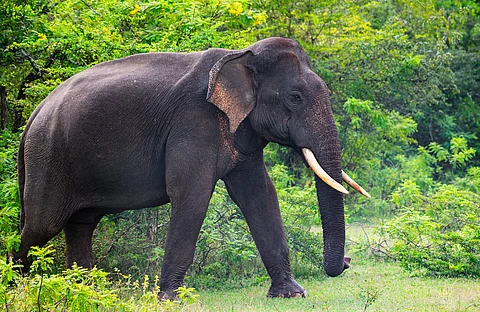Top Stories
Asian Elephants Face Habitat Crisis as Range Shifts Eastward

A recent report by the United Nations highlights a significant shift in the range of Asian elephants, moving from South Asia to Southeast Asia. The report, released by the Convention on the Conservation of Migratory Species of Wild Animals (CMS) on October 2, 2025, warns that this shift could lead to a rise in human-elephant conflicts, as local populations may struggle to adapt to the changing landscape.
The findings stem from a workshop held in Edinburgh, United Kingdom, from February 11 to 13, 2025. This gathering brought together 73 experts, including scientists, wildlife managers, and representatives from intergovernmental agencies and non-governmental organizations. Their collective insights form a comprehensive assessment of how climate change is disrupting migratory species, including elephants.
Shermin de Silva from the University of California San Diego presented critical research on Asian elephant movements in response to climate change. Her presentation, titled “Asian Elephant Range Shifts and Connectivity Under Climate Change,” emphasized the challenges posed by anthropogenic land use and climate disruptions. “Asian elephants are likely to alter their movements in response to these changes, potentially escalating the risk of conflict with human populations,” the report states.
De Silva and her team employed ecological niche modeling to analyze suitable habitats for elephants both historically and in projected future scenarios. They compared these findings with predictions of human population density to identify areas of potential conflict. The analysis revealed that although more than 73% of the global Asian elephant population resides in South Asia, primarily in India and Sri Lanka, suitable habitats in these regions are expected to decline significantly.
Conversely, the report indicates that Southeast Asia may offer more available habitats for elephants, despite current populations being smaller and in decline. This unexpected easterly shift highlights the need for urgent attention as the connectivity among habitats diminishes. The report notes, “While habitat connectivity overall is declining, the best remaining connectivity is also in Southeast Asia.”
The implications of these shifts raise several biological and sociological concerns. Elephants unable to migrate will face increased risks, while human populations may find themselves unprepared to coexist with elephants in new regions. The report points out that isolated populations, particularly on islands, could face severe challenges. Local adaptations of elephants may also vary due to differences in rainfall patterns across regions.
“As the bulk of the Asian elephant population overlaps heavily with human settlements, the inability to move directly to suitable habitats necessitates local and international coordination strategies,” the report stresses. It underscores the urgent need for comprehensive strategies to manage the complex interactions between elephants and human communities in the face of climate change.
This report serves as a crucial reminder of the ongoing impact of climate change on wildlife and the pressing need for effective conservation measures to mitigate potential conflicts. As both Asian elephants and human populations navigate these changes, collaboration and proactive planning will be essential to ensure coexistence in a rapidly evolving environment.
-

 World5 months ago
World5 months agoSBI Announces QIP Floor Price at ₹811.05 Per Share
-

 Lifestyle5 months ago
Lifestyle5 months agoCept Unveils ₹3.1 Crore Urban Mobility Plan for Sustainable Growth
-

 Science4 months ago
Science4 months agoNew Blood Group Discovered in South Indian Woman at Rotary Centre
-

 World5 months ago
World5 months agoTorrential Rains Cause Flash Flooding in New York and New Jersey
-

 Top Stories5 months ago
Top Stories5 months agoKonkani Cultural Organisation to Host Pearl Jubilee in Abu Dhabi
-

 Sports4 months ago
Sports4 months agoBroad Advocates for Bowling Change Ahead of Final Test Against India
-

 Science5 months ago
Science5 months agoNothing Headphone 1 Review: A Bold Contender in Audio Design
-

 Top Stories5 months ago
Top Stories5 months agoAir India Crash Investigation Highlights Boeing Fuel Switch Concerns
-

 Business5 months ago
Business5 months agoIndian Stock Market Rebounds: Sensex and Nifty Rise After Four-Day Decline
-

 Sports4 months ago
Sports4 months agoCristian Totti Retires at 19: Pressure of Fame Takes Toll
-

 Politics5 months ago
Politics5 months agoAbandoned Doberman Finds New Home After Journey to Prague
-

 Top Stories5 months ago
Top Stories5 months agoPatna Bank Manager Abhishek Varun Found Dead in Well









